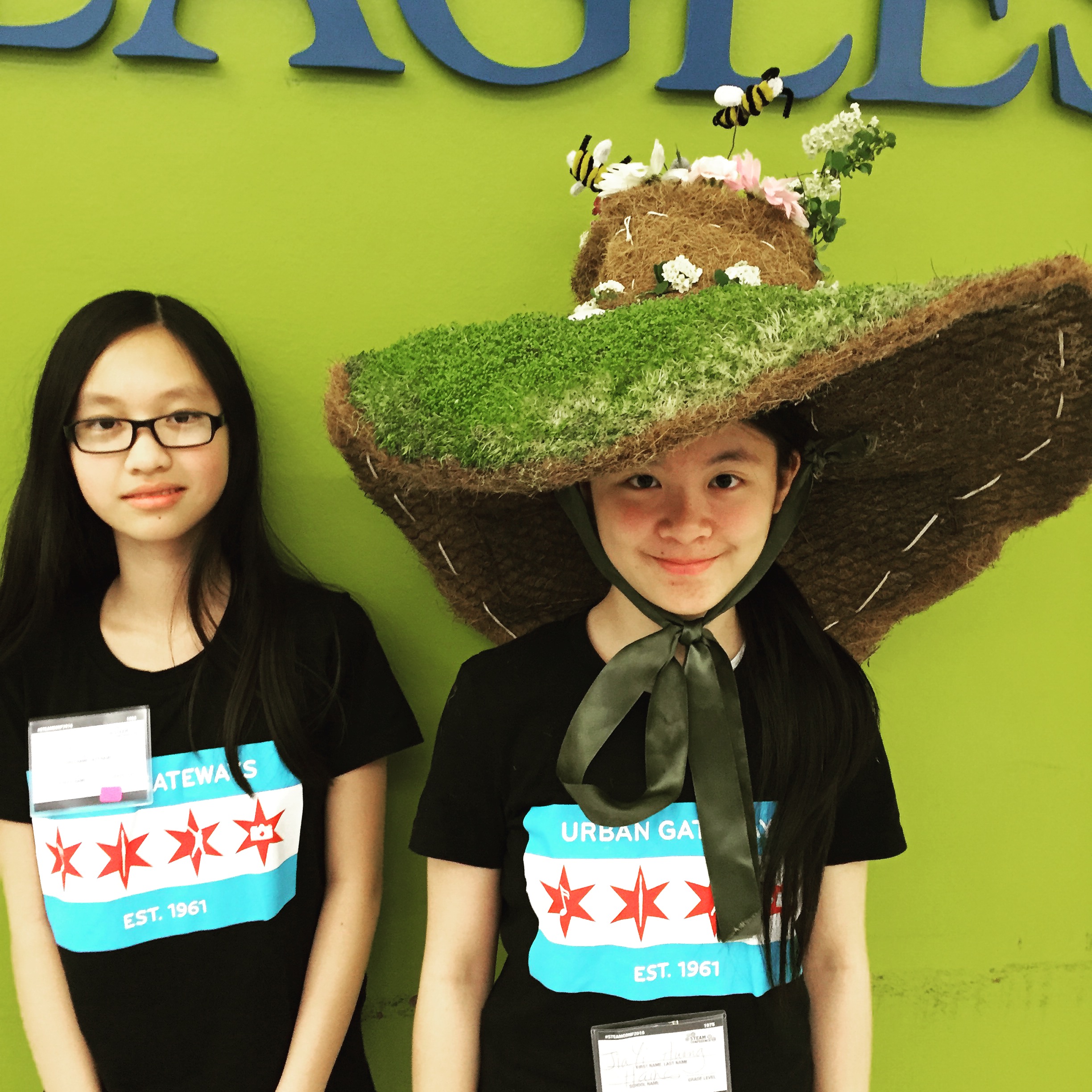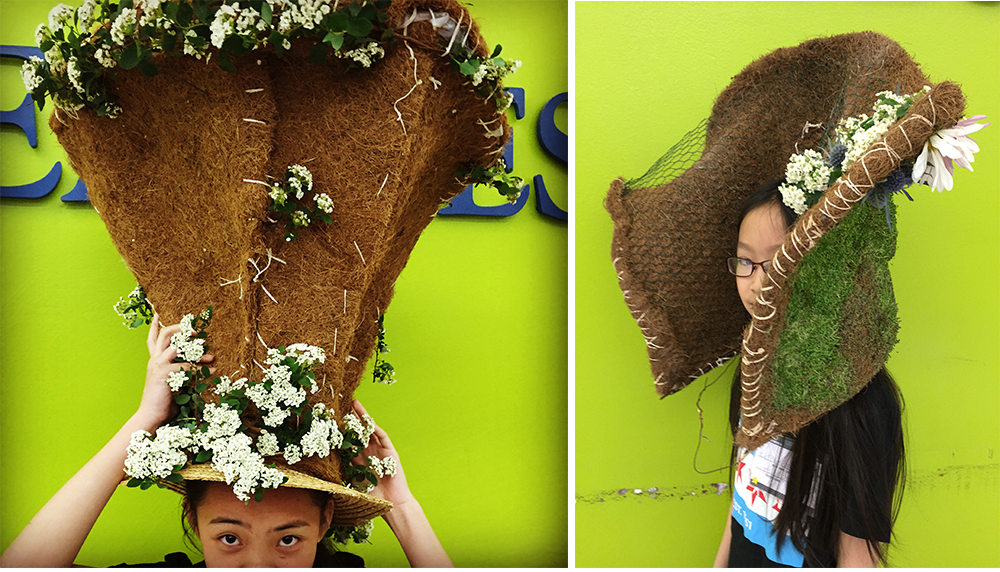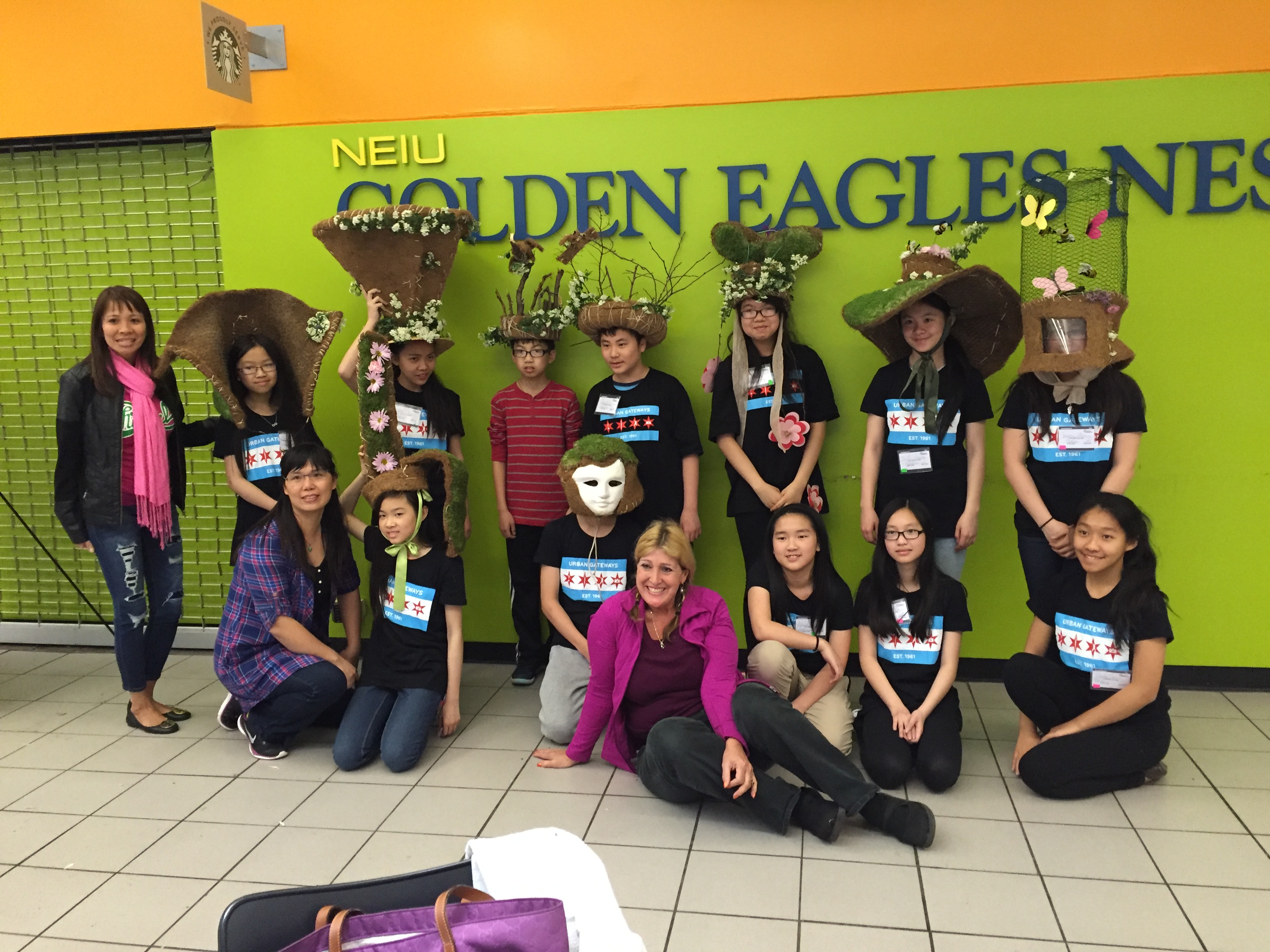What comes to mind when you hear talk of the birds and the bees? If it’s not pollinator extinction, well, it should be! Pollinator extinction is a crisis facing our planet’s food supply and economy. It is also the concept that Urban Gateways teaching artist Nicole Beck chose as inspiration during her spring 2016 residency at Haines Elementary School in Chinatown.
Worldwide, 75% of food crops depend, at least in part, on pollination. Some of these crops include: all tree fruit, all peppers, all nuts, berries, and cocoa (yep, even chocolate!). Birds, bees, bats, and butterflies are only a few examples of animals that contribute to pollination. An alarming number of these pollinator species are in jeopardy of extinction, a United Nations study warns: over 40% of invertebrate pollinators and 16% of vertebrate pollinators. This puts not only our nutritional health at risk, but also our financial well-being, as hundreds of billions of dollars worth of global food-product yield relies on pollinator contribution.
Nicole Beck collaborated with Dr. Bellasanta Ferrer, the science teacher at Haines Elementary, to combine the science of pollinator extinction with artistic representation. Together they implemented the “People & Plants” module, part of Urban Gateways’ STEAM initiative (STEAM = science, technology, engineering, art, and mathematics) in partnership with Columbia College’s Scientists for Tomorrow program.
For this project students used some of the crops, including coconut and clover, threatened by pollinator extinction as the primary materials in wearable plant-based art. They also used materials such as aluminum and copper wire, wire mesh, and fresh-cut spring flowers; not to mention a little artistic inspiration drawn from birds, bees, bunnies, “Alice in Wonderland”, and even robots! All these elements combined resulted in spectacular wearable vertical gardens.

Above: Jiayi Huang (right) models a 1970s-inspired hat designed and created in collaboration with Si Yan (left) to honor Earth Day, which first began in 1970.

Vicki Chen (left) and Amanda Yi took their inspiration from “Alice’s Adventure in Wonderland” and became the Mad Hatter and the Queen of Clubs.

Jeffery Chen created this futuristic “Plant Robot” which was difficult as it required precise measurements.
“With these fantastic hats, we largely focused on the current crisis across America with pollinator extinction. Because of a commercial food system that promotes the overuse of pesticides and herbicides in mega-farming operations, bees and monarch butterflies are being decimated.” -Nicole Beck

Students presented their unique creations as part of the 6th annual STEAM Conference on May 14th at Northeastern Illinois University. They were some of the youngest presenters at the conference!
Throughout this green residency, students also learned about the science of plants, photosynthesis, and climate change. “We found out that plants do not need us to survive, but we most certainly need them,” said Beck. The group also germinated a garden of pollinator plants that they will transplant outside on school grounds.
For more pictures, visit Urban Gateways on Flickr!
Thanks to Scientists for Tomorrow for their support of this STEAM initiative at Haines Elementary!

